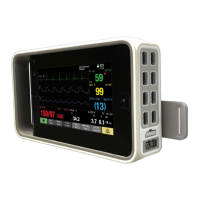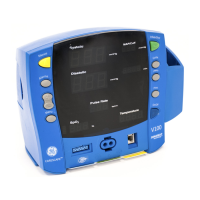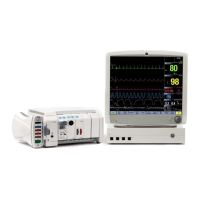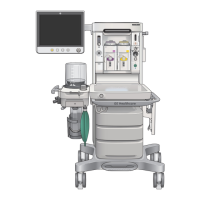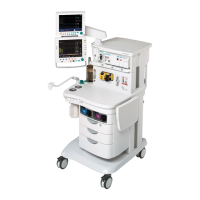EEGandauditoryevokedpotentials
AEPpracticalities
AEPmeasurementdescription
Evokedpotentials(EP)areresponsesofthecentralnervoussystemtoexternal
stimulation.Commonevokedpotentialsaretheauditoryevokedpotentials(AEP),
somatosensoryevokedpotentials(SSEP),andvisualevokedpotentials(VEP).
Evokedpotentialsaremeasuredbystimulationandestimatingtheresponse.The
evokedpotentialsarelargelyaffectedbythesamethingsastheEEG.Integrityof
neuralpathwaysbringstheinformationtothecortex.Examplesofdecitsinthe
pathwaysareslower,smallerresponses(loweramplitudes,longerlatencies).
Auditoryevokedpotentials(AEP)aretransientresponsestoanauditorystimulus,
whichisusuallygiventhroughheadphones.AEPsreectthefunctionoftheauditory
pathway.Tocreateadistinguishableresponse,alargeamountofresponsesare
averagedandtheresultsaredisplayedasawaveform.
DuringAEPmonitoring,theAEPelectrodesarealsousedforEEGmonitoring.TheAEP
measurementcanbestartedmanually,repeatedautomaticallyaftersetintervals,or
themeasurementcanbecontinuouswithmovingaveraging.
Mainpeakcategories(AEP)
Latenciesandamplitudesofparticularpeaksareimportantinformation.Latencyis
thetimetothepeak,andamplitudeistheheightofthepeak.Typicallyinanesthesia,
forexample,corticallatenciesgrowlongerasanesthesiastartstotakeeffectinthe
brain.Threemaingroupsofpeakscanbedistinguished,andtheycanbecorrelatedto
anatomicalstructures.
●BrainstemAEP(BAEP)
■withlatenciesshorterthan10ms
■cochlea,acousticnerve,brainstem
●MiddlelatencyAEP(MLAEP)
■withlatenciesfrom10msto100ms
■primaryauditorycortex(temporallobe)
●LonglatencyAEP(LLAEP)
■withlatenciesfrom100msto1000ms
■frontalcortex
NOTE
LLAEPdisplayisnotsupportedinthemonitor.
ExamplesoftypicalAEPpatterns
AEP1msto1000mswithanatomicalsitesandlabeling:
2062971-001CARESCAPEModularMonitors391
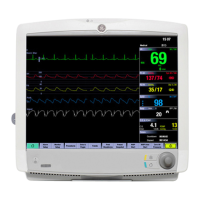
